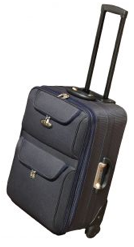Regardless of your finances, it never hurts to spend time during your vacation doing low-cost and free activities, or finding other ways to cutback. To learn how to save money while still enjoying your vacation, read below my “What to Do” tips. For other tips, click these links to read “Where to Go” and “Where to Stay.”
What to Do
Regardless of where you go on your vacation, you can also cut costs by what you choose to do while taking time away from home. The more time you spend doing free or low-cost activities, the less time you have to shop or do more expensive activities. Here are just a few ideas:

Biking, hiking, camping, or just taking time to stop at scenic overlooks are great low-cost ways to spend part of your wallet-friendly vacation.
Go Biking: In most cities there are parks, hotels or lake front shops that do bike rentals fairly cheap (or bring your own), allowing you to do a self-guided pedal tour around town, or simply take in the scenery.
View the scenic overlooks: If you’re driving to your destination, allow time to stop at many of the scenic overlooks or historical markers off the Interstate. Too often we drive past these as we’re in a hurry to get to where we’re going, but the views are often a nice no-cost pause to our day.
Take a hike: You don’t have to climb a mountain with granola in your knapsack to enjoy a nice hike. Take a walk through a forest reserve or nature preserve, or along a wooded trail. There’s one in almost every area and if you walk right in, your cost is often free.

Spend a night camping
Pitch a tent: Spend one night of your trip camping outdoors instead of in a hotel and shave $100 or more off your vacation. Even if you’re not a camper, one night under the stars is a nice break from the hustle and bustle. If you don’t want to pitch a tent and sleep in a bag, if the space in your mini-van or SUV allows, just let the seats back for a night, and relax. Bring pillows and a blanket to add to your comfort. You’ll enjoy watching the sun rise after your night of rest.

Looking for a low-cost vacation? Take a trip to the beach. (Photo courtesy of Joaquim Alves Gaspar)
Hit the beach: Feeling the soft sand between your toes, listening to the sounds of the waves crashing and the seagulls cawing can be relaxing and inexpensive, when you choose a public beach instead of a private resort.
 Click image to see a clip from my appearance on ABC News discussing “secret” credit scores you need to know!
Click image to see a clip from my appearance on ABC News discussing “secret” credit scores you need to know!

















You must be logged in to post a comment.